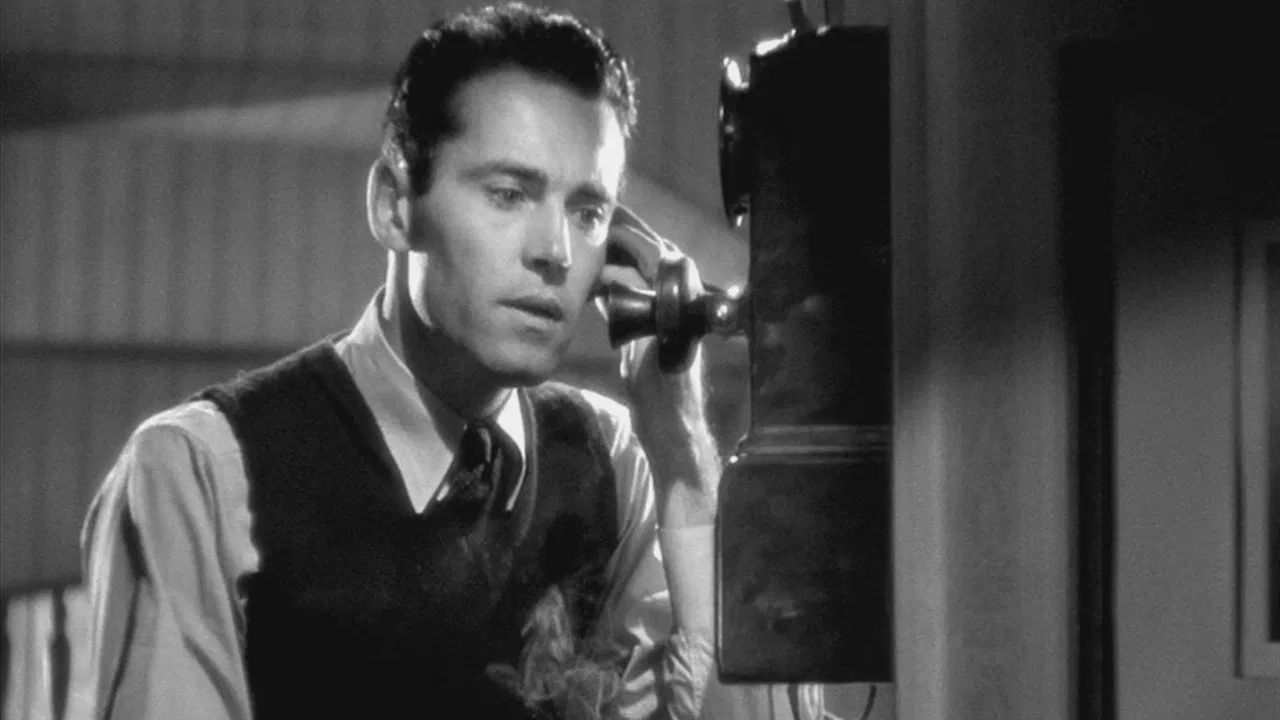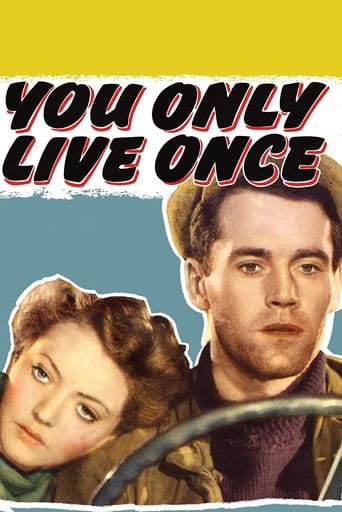

This is quite a well known film with Henry Fonda playing three time loser Eddie Taylor. Much of the plot is improbable, indeed the prison bust-out is Fantasy Island stuff because even in the 1930s security for a man under sentence of death in the United States was an order of magnitude stronger than depicted here, but this is a film that was clearly produced as a social document as much as for entertainment. Eddie Taylor is a most unappealing character, one whom even an actor of Fonda's stature cannot inject with empathy, added to which if he'd had so much as a shred of decency he would never have dragged down his girl with him, would probably not have married her in the first place. Nevertheless, the question remains, how does society deal with even the repentant habitual criminal? Seventy and more years on, little if anything has been done to address that problem, certainly in America with its enormous prison population and the continued destruction of unskilled jobs which reduce almost to nothing the prospects of the underclass – criminal or otherwise – of making an honest living.
... View MoreStory or no story, what woman would give up her baby and flee with her condemned husband? This was one of the problems I had with a fairly good film. As always, the acting by Henry Fonda and Sylvia Sidney were very good.The picture again tries to prove that once you're a convict, you're labeled that way for life,even when you try to go straight. Such was the case with Fonda, who tried to go straight, but the rejection by others led only to more trouble for him.William Gargan was excellent as the victim-priest. It was the experiences of the Fonda character which wouldn't allow him to believe police officials that he had been exonerated of the crime he had been charged with. Sad commentary on our lives.
... View MoreFritz Lang is a director with an immensely big reputation, which has everything to do with his movies "Metropolis" and "M" but in all truth and honesty, most of his other movies were were merely average ones. This one included. It's a good movie but nothing about this movie makes it a special one or a must-see really.It has a decent enough story but definitely not a solid or credible one. The movie is being a bit melodramatic and forced with all of its events and emotions but then again, this really wasn't that uncommon for an 1930's movie. I liked some of the places the movie was taken its story but then the movie would do something stupid and silly again, which took me out of the movie and prevented me from connecting to its characters and everything that is going on with them.The movie ultimately tries to present itself as a love story, with only one big crime and dramatic twist to it. The combination of all these elements does work out well enough and also original. It still makes "You Only Live Once" definitely a good watch and for its time it also really isn't a bad attempt. The story works sort of renewing and original and also the twists and turns in it make this far from the typical genre attempt, from about that same time period this movie got made in.It takes some good approach with its directing and cinematography, which at times make you forget you are watching an '30's movie here. The movie can feel quite modern and raw at times, also because it's not a movie that is constantly busy with trying to wrap things up needly and create an happy ending for all of its main characters.The movie features a young Henry Fonda, with still lots of hair. It's one of his earliest movie roles and funny thing about him is that he never really played secondary characters but always had been the main lead, ever since the start of his acting career. And why not. He definitely had the right required skills and also looks for it and he also was quite good in this movie. Even though the story gets melodramatic at times, the actors still aren't overacting and keep things as real as possible. It's the reason why "You Only Live Once" still works out good and effectively, for most part.A good movie to watch but at the same time also one you could easily do without ever seeing.7/10http://bobafett1138.blogspot.com/
... View MoreJoan Graham is the secretary for Stephen Witney, an honest and dedicated public defender, who succeeds in doing something he would almost rather not do: get Joan's sweetheart, Eddie Taylor, out of prison. Eddie is a good man, but Joan's sister, Bonnie, and Stephen both agree that he is no good for Joan. Eddie was born trouble. Joan and Eddie get married and set out to prove the naysayers wrong. Eddie gets a good, steady job as a truck driver; but a series of disasters sends his life spiraling out of control and the fiercely loyal Joan's along with it.Fritz Lang directs this hard-hitting melodrama and, as always, fills it with striking images. The shot of Eddie (Henry Fonda) in his cell, with the shadows of the bars reaching out to meet the bored and uninterested guard, stands out. The shots of a wide-eyed and desperate Fonda asking Joan (Sylvia Sidney) for a gun are a triumph for Lang, Fonda and Lang's cinematographer, Leon Shamroy. Lang also gets excellent work out of his editor, Daniel Mandell, who helps Lang to juxtapose images in a suggestive way, e.g. the shots of the frogs with shots of Joan and Eddie.Standing back from the film and looking at is as a whole makes it something of a marvel. We begin with light comedy, proceed to an adorable romance and then follow the characters as their lives - and the film itself - grows steadily darker.
... View More